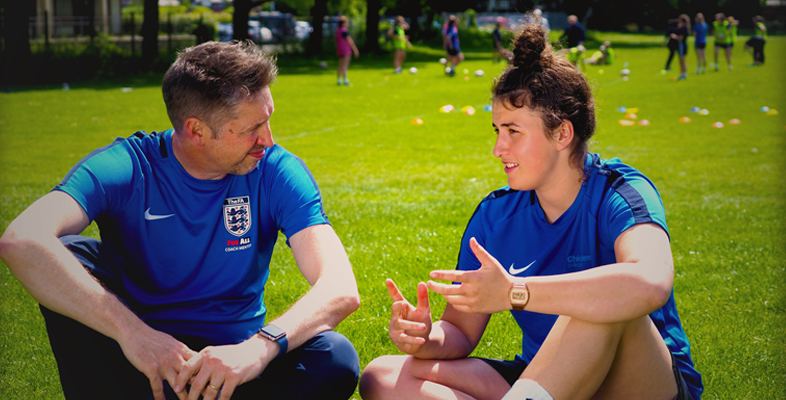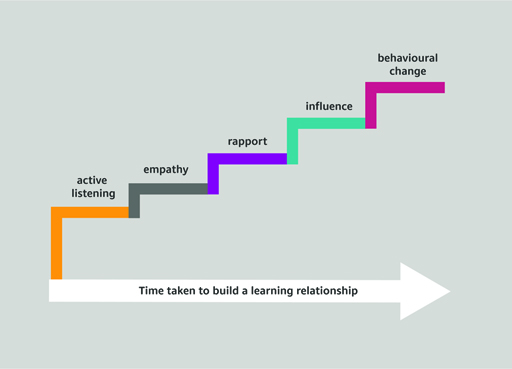3 The mysteries of coaching and a model of behaviour change
In this section you will draw more learning from Alan and Mark’s story. First you’ll consider the metaphor of coaching as a mystery, and then coaching as part of a model: a stairway towards behavioural change.
Gregory Treverton (2007) has described the distinction between a puzzle and a mystery. If coaching were a puzzle – like a crossword – Treverton would argue the answers are found by acquiring more information. Coaching is more like the mysteries that Treverton describes – it is more complex, and many of the problems coaches encounter do not always have a right answer or the correct solutions of a puzzle. Mysteries need to be re-framed and seen from a different perspective, so just acquiring more information will not always help.
Mark’s skill as a coach developer illustrates this distinction: he avoids providing Alan with more technical and tactical information or showing him more practices. Instead Mark has sought to re-frame Alan’s method of coaching by offering a different solution, an alternative approach to the one Alan has been using. A temptation for coaches is to believe that coach developers have the right answers to their problems. Instead, some of the skill and expertise of a coach developer comes from understanding their role in helping coaches view problems from a different perspective. It is to make the mysteries of coaching a little less mysterious by re-framing problems and working with coaches to create solutions that improve the experience of the people they coach.
The relationship between Alan and Mark can also be viewed from the perspective of a model used to train negotiators handling a crisis situation (Vecchi et al., 2005). The Behavioural change stairway model (BCSM), represented in Figure 6, claims that five steps can lead to a desirable change in behaviour.
This model suggests that each step is one part of a sequence that builds on another. For example, it is claimed influence cannot be achieved before rapport has been developed; building rapport in turn requires engaging in empathy and active listening. It also takes time to bring about a change in behaviour, as shown by the white arrow, where time is measured relative to the speed of the relationship building process, however quickly or slowly it develops. In Alan’s story you can arguably hear the stairway model in action. The initial phase of building rapport and creating a positive relationship preceded the stage where Mark was able to exert the influence which led Alan to re-think and alter his approach to coaching and the behaviours he used. Such is the importance of rapport that the whole of Session 3 is devoted to building effective learning relationships while active listening is explored more fully in Session 6.
So far in this session you have considered what is meant by the term ‘coach developer’. You have also considered how your role as a coach developer often means enabling coaches to make better sense of what they already know. Now you turn to the question: what makes an effective coach developer?


